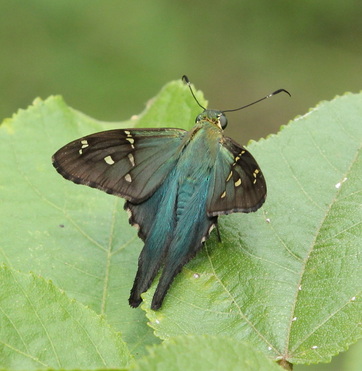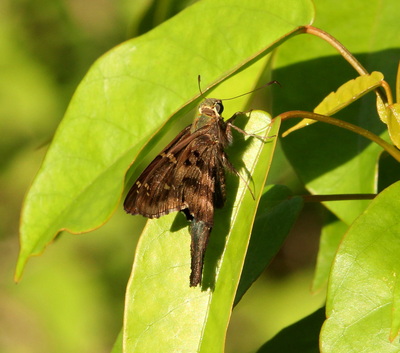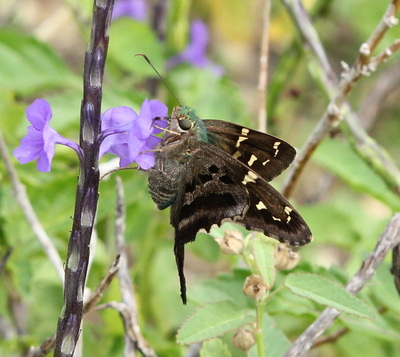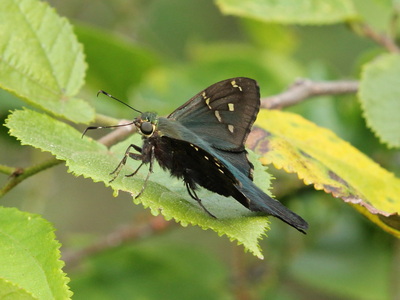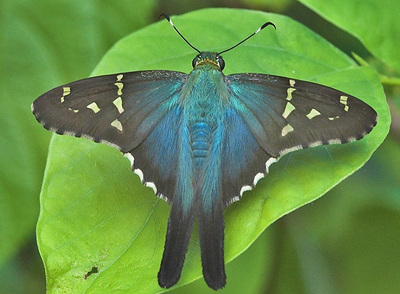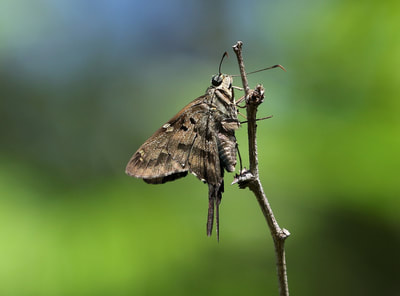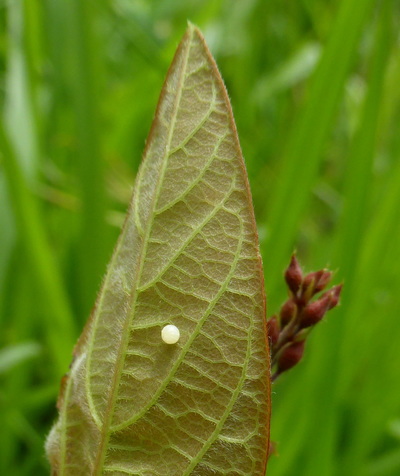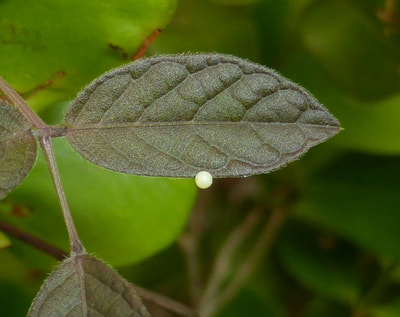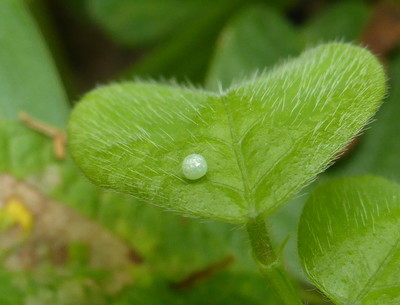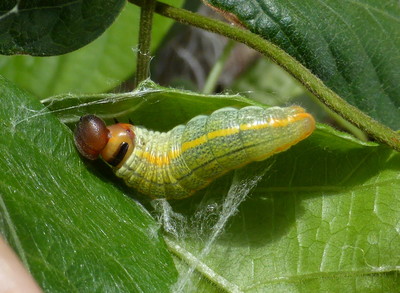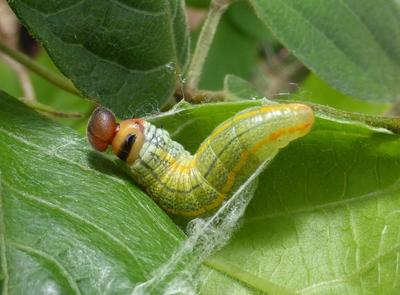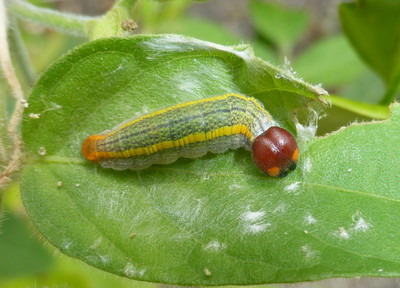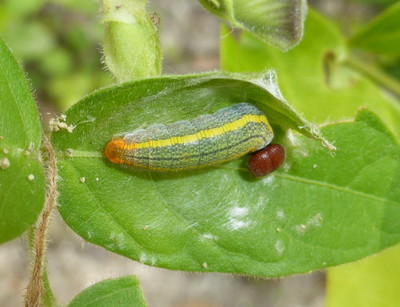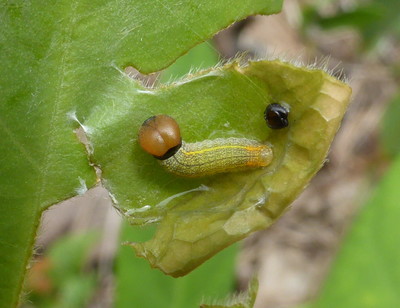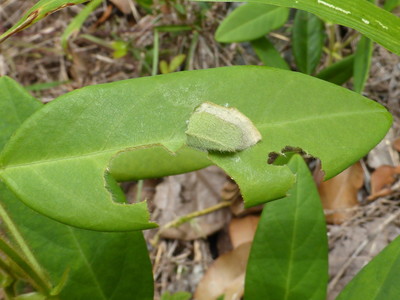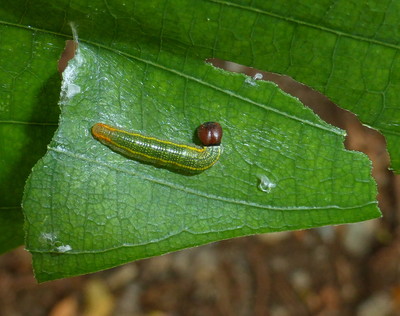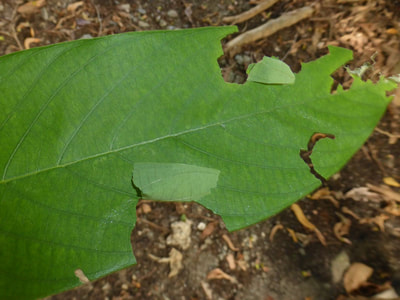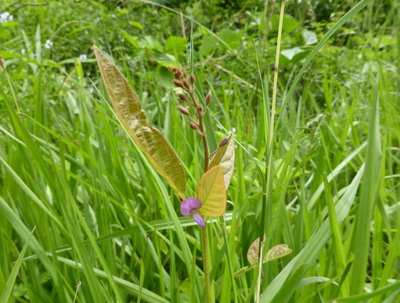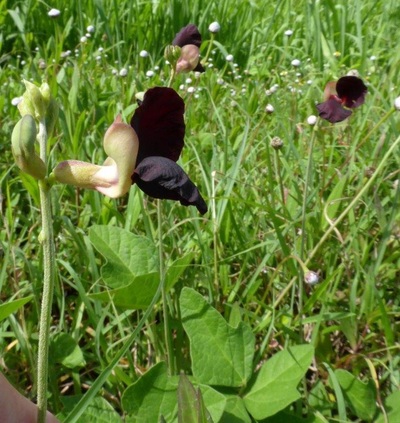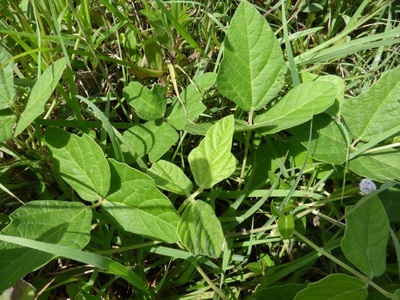Hesperiidae : Eudaminae
Urbanus proteus (Scudder, 1872)
Common Long-tailed Skipper
Urbanus proteus (Scudder, 1872)
Common Long-tailed Skipper
Description and Similar Species: Wingspan 48-54mm. The long tails combined with the blue-grey hairs of the head, abdomen and upperwings are diagnostic. Both sexes have a V-shape of white dots on the forewing and a chequered fringe on the hindwing. Underside is brown with a purplish tinge and darker transverse bands with two brown dots at the top of the inner band. Flies low but will perch on higher vegetation. This one of three species of long-tailed skippers found in Cuba but is the only one with blue-gray hairs on the upperside. Continuously brooded and seen in all months
Range: North and South America and throughout the West Indies.
Status: Widespread throughout Cuba though not as common as Urbanus dorantes.
Nectar Plants: Stachytarpheta jamaicensis, Cordia sp., Ageratum conyzoides, Tournefortia hirsutissima, Walteria americana, Lippia alba, Tabernaemontana amblyocarpa, Lantana sp., Bidens pilosa, Urena lobata, Wedelia rugosa and others.
Larval Foodplants: Can be a pest on the leaves of peas and beans such as Phaseolus and Desmodium in the family Leguminosae and on Macroptilium atropurpureum.
Range: North and South America and throughout the West Indies.
Status: Widespread throughout Cuba though not as common as Urbanus dorantes.
Nectar Plants: Stachytarpheta jamaicensis, Cordia sp., Ageratum conyzoides, Tournefortia hirsutissima, Walteria americana, Lippia alba, Tabernaemontana amblyocarpa, Lantana sp., Bidens pilosa, Urena lobata, Wedelia rugosa and others.
Larval Foodplants: Can be a pest on the leaves of peas and beans such as Phaseolus and Desmodium in the family Leguminosae and on Macroptilium atropurpureum.
Egg
Larva
Foodplant and Habitat
